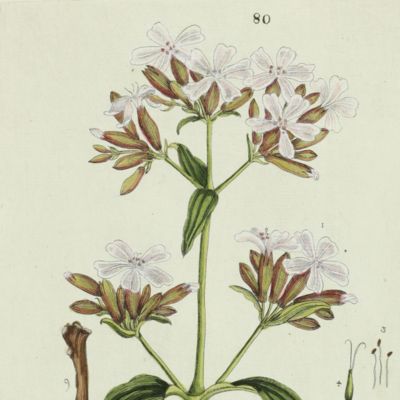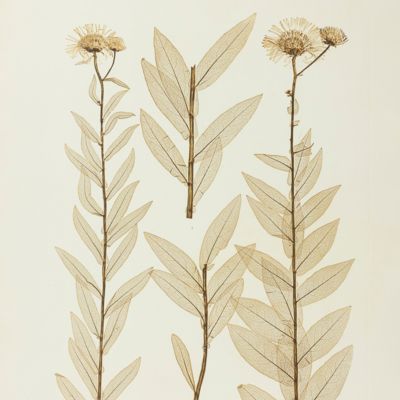Bulliard, P.
Euphorbia peplus [from the Herbier de la France]
Paris, published by the author/artist, 1781. 4to-sized (29.6 x 20.4 cm). Single leaf, early colour printing. Printed surface 22.8 x 16.9 cm.
This fine illustration of the petty spurge, radium weed, cancer weed, or milkweed, Euphorbia peplus, or, in French, the "Reveil Matin", or "Le tithymale à feuilles rondes", is a very early example of fine colour printing (Stafleu and Cowan, I, p. 404: "it is one of the first colour printed botanical works"). It was originally published as plate 79 of Pierre Buillard's " Herbier de la France, ou Collection complette des Plantes Indigènes de ce Royaume; avec leurs détails anatomiques, leurs propriétés, et leurs usages en Médecine". A suggested by the many, different common names, it is a versatile medicinal plant "The plant's sap is toxic to rapidly replicating human tissue, and has long been used as a traditional remedy for common skin lesions, including cancer. The active ingredient in the sap is a diterpene ester called ingenol mebutate. A pharmaceutical-grade ingenol mebutate gel has approval from the US Food and Drug Administration for treatment of actinic keratosis" (Wikipedia). The colour printing, without retouching by hand, is in the Le Blon-Gauthier method, using a separate plate for each colour. A technique rarely employed for botanical books. Bulliard was his own printer. He mixed coloured inks with great delicacy and, in general, accuracy, and inked his tint plates with minute attention to detail. Some soiling and discolouring of the margins, lower margin a bit creased, otherwise very good, with a strong, even impression. Rare. A fine plate on strong paper. Stafleu and Cowan, 905.
![<em>Euphorbia peplus [from the Herbier de la France]</em>](https://schierenberg.nl/media/cache/product_thumb/70131/70131_x.jpg)





